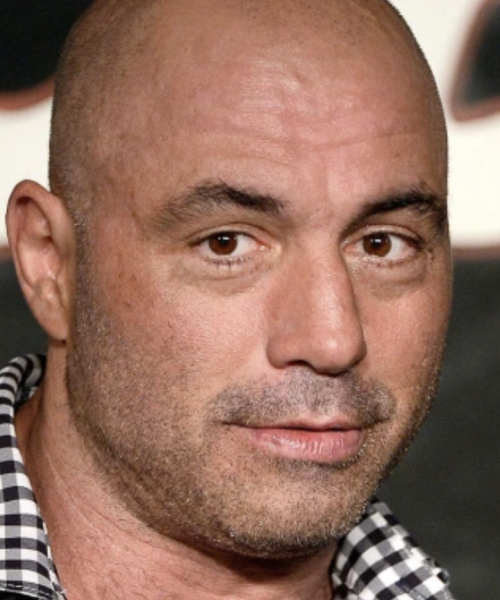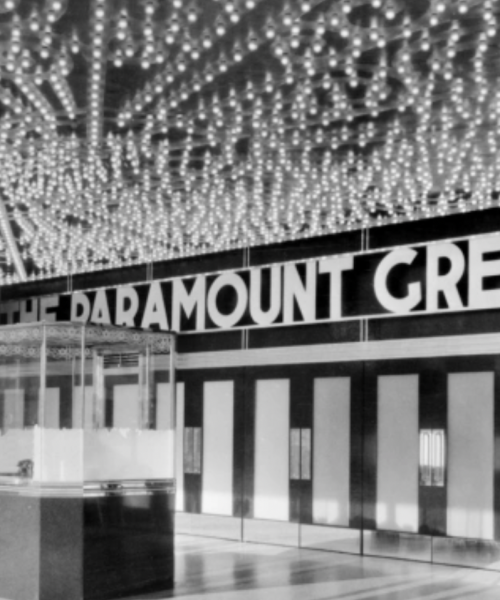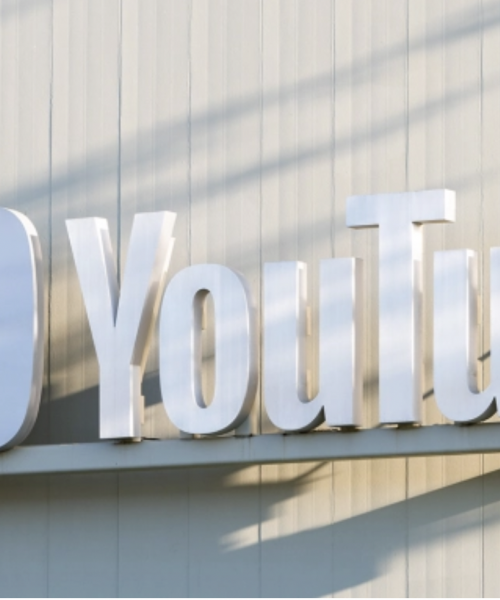BY GARY BAUM, KATIE KILKENNY | HollywoodReporter.Com
Troy Warren for CNT #Business
According to union organizers and observers, the pandemic, streaming and corporate consolidation collided in 2021 to supercharge the activist playbook — and this is only the beginning.
In his dozen years at IATSE Local USA 829 — United Scenic Artists — national business agent Carl Mulert says he’s never seen members as engaged as they are now, with more calls coming in to his office and heightened attendance at the organization’s meetings. “We have awoken a sleeping giant,” he says, explaining that the pandemic has reframed expectations about worker quality of life and broadened labor’s primary focus beyond wage bumps. “People didn’t realize how important rest periods were until they actually were getting rest. How important a meal break was until they were having three meals a day at regular times.”
Lockdown life, along with the pressures of corporate consolidation and streaming, have prompted a roiling Hollywood labor rebellion. “It’s been an extraordinary year in terms of workers flexing their collective power,” says Steve Smith, communications director at the California Labor Federation. “We haven’t seen a year like this in decades.” Observes Loeb & Loeb entertainment labor practice group chair Ivy Kagan Bierman, who represents entertainment companies in their dealings with guilds and unions: “We are in a time frame where the guilds and unions are more powerful, and I think that they will continue to be more powerful for probably many years to come.”
The Writers Guild set the tone in February when WME became the last major talent agency to reach a franchise agreement with the guild, effectively handing the WGA a victory in its audacious bid to change agency business practices. The campaign prompted WME and CAA to minimize their stakes in affiliate production entities, and major agencies agreed to end the practice of packaging by July 1 of next year. Months later, IATSE nearly brought a significant portion of the entertainment industry to a standstill when 98 percent of its tens of thousands of voting members authorized an unprecedented industrywide strike, which, if it had occurred, would have been the largest strike action nationally in decades, with around 60,000 workers withholding their labor, says Smith. (IATSE would end up divided over the deal that averted the work stoppage, with 72 percent turnout in the ratification vote. The union’s international president framed these participation levels, the tight election and vigorous member engagement around the contract as “an unprecedented movement-building opportunity.”)
Up next: Talks this month and in 2022 involving the Teamsters Local 399 (drivers, animal trainers and other jobs), as well as the Animation Guild, SAG-AFTRA — which opens discussions for a new Netflix agreement — and the Writers Guild East, negotiating contracts at broadcast news outlets (ABC, CBS) and digital outlets (Slate, Vox).
Meanwhile, other wage earners, from comic-book employees to property masters, have recently established new worker groups to advocate for their interests, and the Rust shooting tragedy and the long-delayed exposure of mega-producer Scott Rudin’s reign of abusive behavior brought to the fore issues of physical and mental safety at the workplace.
The pandemic catalyzed much of the activity. “People think about how so much could change in response to COVID in how their jobs were done, whether on set or in an office,” explains University of Georgia entertainment and media studies professor Kate Fortmueller, whose research focuses on Hollywood labor. “So why not reimagine everything else?” To Fortmueller, it is salient that punishingly long hours with short turnarounds — an entrenched staple of production — have suddenly become Topic A since the IATSE negotiations. “A younger generation, coming up, is much more concerned about mental health,” she says. “They don’t have the same kind of workaholic mentality.”
Streaming’s ceaseless content thirst — shaping earnings expectations, deal flow and production volume — has opened battle lines across the business. They range from A-list talent (Scarlett Johansson’s Black Widow payday lawsuit in July against employer Disney; the parties later reached an undisclosed settlement) to ill will below the line over new-normal production realities (also a consequence of the pandemic) like ultra-tight turnaround schedules, unrealistically short pre-calls and supposed “walking lunches,” in which workers take meals during an extended window instead of a formalized midday break. (Certain crewmembers find it difficult to pull themselves away from ongoing shooting.)
“A production executive recently asked me, ‘Why is everyone so miserable on these sets?’” says prop master Joshua Meltzer (Dexter, Will & Grace), president of the Property Masters Guild, which formed in November. “It’s streaming. It’s not sustainable.”
Rebecca Green, president of upstart labor group the Producers Union and producer of It Follows, notes that streamers and their executives have prospered through the pandemic: “To see so many people struggle and yet Ted Sarandos making [nearly] $40 million in 2020…really gets under people’s skin.”
Social media has fueled support and quickly transformed the industry’s labor narrative. Like #PayUpHollywood, the hashtag launched in 2019 that advocates for improved wages and working conditions for support staff, IATSE members this year popularized tags (these included #IALivingWage, #IASolidarity and #PayAnimationWriters) to focus attention on their working conditions and wages that were up for reappraisal. Personal stories, both anonymous and with names attached, shared on the IA Stories Instagram account changed the conversation around long hours, meal breaks and other issues. Similar industry accounts have since emerged for film-festival workers, nonfiction workers and commercial crew.
“The usage of social media to empower the workers has been massive. One of the biggest weapons that the companies have always had has been control of the narrative,” says Liz Alper, the co-founder of #PayUpHollywood and Writers Guild of America West board of directors member. She adds that, by contrast, IATSE workers this year “humanized the workers whose names are on that credit scroll” and that the union has so widely publicized issues of rest periods and turnaround times that employers can no longer plead ignorance.
Even as they spoke out, some workers also signaled dissatisfaction with their unions. In November, IATSE sealed its latest Basic Agreement deal based on a delegate count after members narrowly defeated the controversial agreement in a popular vote. The agreement’s gains are 3 percent annual scale wage increases for all members; applying 10-hour daily rest periods between workdays to more members; weekend rest periods of 54 and 32 hours for five-day and six-day weeks, respectively; and minimum hourly wage increases for the lowest-paid members from around $16 an hour to $26 an hour by the end of the contract’s three-year term. But, as evidenced by the 50.4 percent of the popular vote that voted “no” on the agreement, many members wanted greater gains. USC history professor Steven J. Ross, who studies organized labor, notes that IATSE’s leadership hasn’t faced such dissent from its rank and file since the late 1940s.
Ross says that IATSE’s inability to secure meaningfully stiff financial penalties for missed meal breaks and other worker grievances allows resentments to flourish. “The one thing that did pop out was taking the initiative to raise the lowest-paid workers’ salary. I don’t think it’s enough [though],” says a camera assistant in Local 600 who asked to remain anonymous and is an administrator of IA Members, a popular Instagram account with more than 12,000 members that has given a platform to IATSE members unhappy with the 2021 Basic Agreement deal.
Hollywood labor’s newly aggressive stance is part of a larger trend. Charmaine Morales, executive vp at United Nurses Associations of California/Union of Health Care Professionals and a vp for the Los Angeles County Labor Council, notes that Kaiser Permanente union employees’ recent threatened (and averted) strike in the fall “was part of the same wave” of labor momentum as the IATSE strike authorization and the John Deere and Kellogg’s strikes. (John Deere workers approved a deal and ended their strike in November.) According to Smith, IATSE’s strike authorization “had reverberating effects that will continue for quite some time.”
In 2021, SAG-AFTRA, IATSE, the WGA and a cavalcade of stars voiced support of a union-backed moratorium on the Chateau Marmont, which has prompted the cancellation of shoots for Amazon’s Being the Ricardos and Paramount’s The Offer at the hotel. “There’s no question that solidarity has been critical to the Chateau boycott,” says Kurt Petersen, co-president of UNITE HERE Local 11, which represents hospitality workers.
Labor’s most hard-line partisans forecast the imminent future as a period of growing intensity, given that the overarching issues that drove this year’s conflicts — financial, technological and behavioral — are unsettled. Alex Wolinetz, on the leadership board of the fast-growing L.A. chapter of the Democratic Socialists of America’s Hollywood Labor subcommittee, which includes more than 200 IATSE members, argues that “conditions aren’t likely to get better in the next few years,” citing housing prices and other costs of living. “Things are just getting more difficult for workers in entertainment.” Adds Wolinetz’s colleague Noah Suarez-Sikes: “We’re seeing a baseline anger that’s not going away as vertical integration and profit maximization is just getting worse.”
IA Members plans to keep a member survey about desired changes to the Basic Agreement open for the next three years. A member of a separate grassroots group, which opposed IATSE’s Basic Agreement, has told The Hollywood Reporter the group is putting together a database of member contacts and speaking with outside labor negotiators as they prepare for upcoming Local elections and the next contract cycle.
Those involved in negotiations agree that the landscape has fundamentally changed for workers. “We’ve all gone through a reckoning,” says Mulert. (Talks for his Local USA 829’s “Majors” features and TV contract will likely begin in early 2022.) “We’re not satisfied with bread-and-butter issues anymore. We’re not satisfied with the status quo.”
In Other NEWS




































